One of the problems of trying to be a beer tourist in Belgium in July is that many places shut for their annual break. This was the case with Cantillon, Brussels’s oldest surviving lambic brewery, a real working museum of beer, which is why we had to squeeze in a visit as we were leaving the Belgian capital.
Still, this really is a Not To Be Missed trip. I don’t think I’ve been round a more rickety-looking brewery since I visited the now-closed Gale’s in Hampshire in the late 1990s, but the whole place is fascinating: a real portrait of how things were, and, as far as Cantillon is concerned, how they will continue to be. Ancient mash tuns, tiny coppers, a shallow coolship itself made out of copper, to help cool the wort as fast as possible, but all helping to make some terrific beers. We were lucky to have the excellent Senna Rees as our guide, who gave us a deeply informed and informative talk as we went round the brewery.
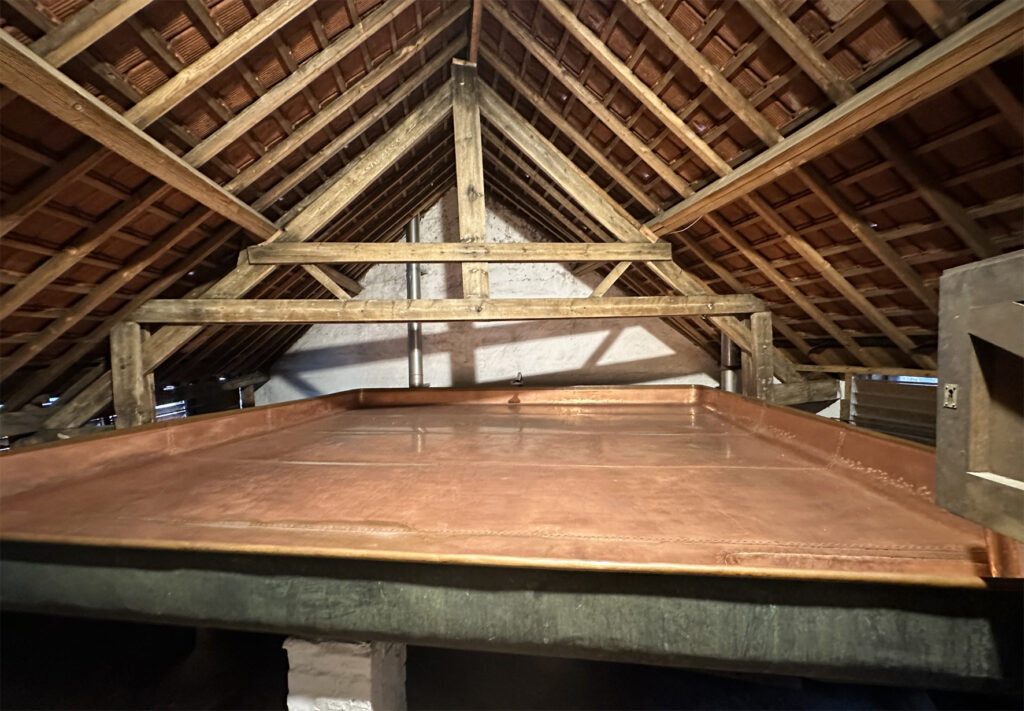
Then it was off to the tasting room, and once again the advantages of travelling in a large group stood out: you’re not going to be able to sample more than a couple of 75cl beers if there are just one or two in the party. Here we were able to try eight or more. Those that stood out for me were the Scarabée, a blend of two-year-old lambic and gewürtztraminer grape pomace from the Kaefferkopf vineyard in Alsace, lightly oaky, dry and only slightly acidic; the Menu Pineau, another grape lambic, this one using the eponymous grape from the Loire region, more musty, more funky and more earthy than the Scarabée, probably because, made in 2019, it was a couple of years older; the Grand Cru Bruocsella, a three-year-old unblended lambic, quite flat, since there is no secondary fermentation in the bottle, pale yellow, and with a hint of exotic citrus – this is only five per cent abv, but Cantillon insists it will keep for years, changing as it ages; and the Tyrnilambic Baie D’Argousier, a lambic with added sea buckthorn berries: this one, although only, I think two or three years old, had a real cheesy feet funk. Sea buckthorn grows in Britain, but we don’t see it used much, though in Germany you can, I believe, buy sea buckthorn juice. Its melon-and-citrus flavours seem ideal for modern pale ales …
But we’re not just here to drink lambic. Time to head 70 miles west now, to another famous abbey, that of Saint Sixtus, home to what Ratebeer claims is the finest beer in the world that isn’t a fuggin’ imperial pastry stout (No, America, 17 of the world’s top 25 beers are NOT imperial stouts.) I’ll put my hand up now and say that whenever I have tried Westvleteren 12, I’ve been disappointed: lacking in depth and character. I was hoping this was because I had never had a fresh one, and drinking it at the fons would show me what the beer was really like.
Not that you can get to the fons, since non-monks are still not allowed in to the brewery, but the monks of St Sixtus have opened a surprisingly large modern restaurant operation and shop, called In de Vrede (“In Peace”), about a hundred yards from the abbey, which was packed with families, dogs and children enjoying a typical Belgian day out – sampling good food and great beer – when our coach pulled up and we piled out. All three of the abbey brewery’s beers were on sale in the restaurant, one of the very few places in the world where they can all be found.
So what was fresh 12 like? Full, dark, deep and malty, but it still wasn’t a socks-blown-off experience. I was rather more impressed with the Westvleteren Blond, a 5.8 per cent abv beer with surprising depth, grassy, citrussy, with a tiny bit of funk and a touch of orange. The 8 was also good: dark brown, slightly sweet, hints of liquorice, dark honey and brown sugar. But I was most impressed with the Westvleteren beer ice-cream, “Coupe In de Vrede”, which was bowl-licking good: I love a good beer ice-cream. When Thomas Hardy Ale was readily available, I used to make a Thomas Hardy ripple ice-cream that was heaven.
(Who was Saint Sixtus, incidentally? Poor guy never gets an explanation, but he appears to be the chap who was the first bishop of Reims, 1,700 years ago and 125 miles to the south of the abbey.)
Back on the bus to snooze the 30 miles to Bruges, our base for the next couple of days. Bruges is another great place for combining “ordinary” tourism with beer tourism: terrific architecture, plenty to see from canals to cafes, the seaside only a few miles away, and no fewer than THREE beer museums (which are, I proved, possible to get round in a morning). But we’re here for the beer: Ron Smith, who was an excellent, hugely knowledgeable and terrifically well-organised guide throughout the trip, led us to Le Trappiste, one of Bruges’s many specialist beer bars, down in an impressively large vaulted cellar. There I shook hands again with Brugs Tarwebier (“Bruges wheat beer”), once brewed by a now-closed Bruges brewery called the Gouden Boom (“Golden Tree”), today made by the local Halve Maan (“Half Moon”) brewery, which I first drank in 1985 …
My stomach was asking for something more solid, so I hied away on Ron’s recommendation to Bar Rose Red on Cordoeaniersstraat (Cordwainer Street?) for a platter of Belgian cheeses and meats – a slightly chi-chi and pretentiously trendy interior, but the beer menu is lengthy and occasionally unusual. I tried a “blonde kveik IPA”, served in a wacky inward-sloping glass and made by Kanaal One (or is it Gigant?), a brewery it appears difficult to find anything about: it’s apparently from Adinkerke, close to the Channel coast and just a couple of miles from the French border, it’s been going only a couple of years, and it picked up a double-handed haul of medals at the World Beer Awards, apparently. And the beer? Fruity, dry, a touch of tartness, little hop character for an alleged IPA, but bitter enough.
I also ordered a bottle of Barrels and Pipes, a collaboration blend between a Belgian microbrewer, De Leite, of Ruddervoorde, eight miles south of Bruges, and an old-established lambic brewer, Oud Beersel. The blend is 70 per cent De Leite’s Bon Homme, a dark Belgian dubbel, and 30 per cent Oud Beersel lambic, and each of the two breweries aged the blend on their own premises, De Leite using barrels for ageing, Oud Beersel (whose version is called Pipes and Barrels) using the larger casks, pipes, which are normally four times the size of a barrel. The result is a dark, sour, tarry, perfumed beer with aromas reminiscent of cherries and mysterious herbs – my tasting notes add: “Whew!”. It was late at night, I was tired, you can interpret that how you wish.
The next day was set aside for exploring Bruges, starting, for me, at the Bourgogne des Flandres brewery, named for the red-brown beer, “Burgundy of Flanders” first made at Den Os (The Ox) brewery in Bruges just before the First World War. Den Os closed in 1957, but Michel Van Houtryve, a descendant of the man who invented Bourgogne des Flandres, had it contract-brewed. Then in 2015 a microbrewery was opened by the John Martin company, the Antwerp-based beer importer and, by then, owner of the Timmerman’s brewery, in buildings in Kartuizeinnenstraat, by a canal in Bruges, and only a short distance from the original Den Os brewery. The new brewery ensured Bourgogne des Flandres could be brewed in the city again, as a blend of a top-fermentation eight per cent abv beer called Den Bruinen Os – The Brown Ox – and one-year-old lambic from the Timmerman’s brewery in Itterbeek, on the western outskirts of Brussels.
For 15 euros you get to tour the museum part of the brewery, which has a well-laid-out selection of exhibits and bits of old kit, ending with a free glass of Bourgogne des Flandres in the bar on the ground floor. The canalside terrace is a very pleasant spot to sit in the sun and contemplate the stream of tourist boats as they pass, and you can, if you wish, try the brewery’s other beers: the Bruinen Os, the Blonden Os (I’ll let you translate that one), a 6.5 per cent wheat beer, and the somewhat oxymoronic Bourgogne des Flandres Blond, a blend of the Blonden Os and a young lambic.
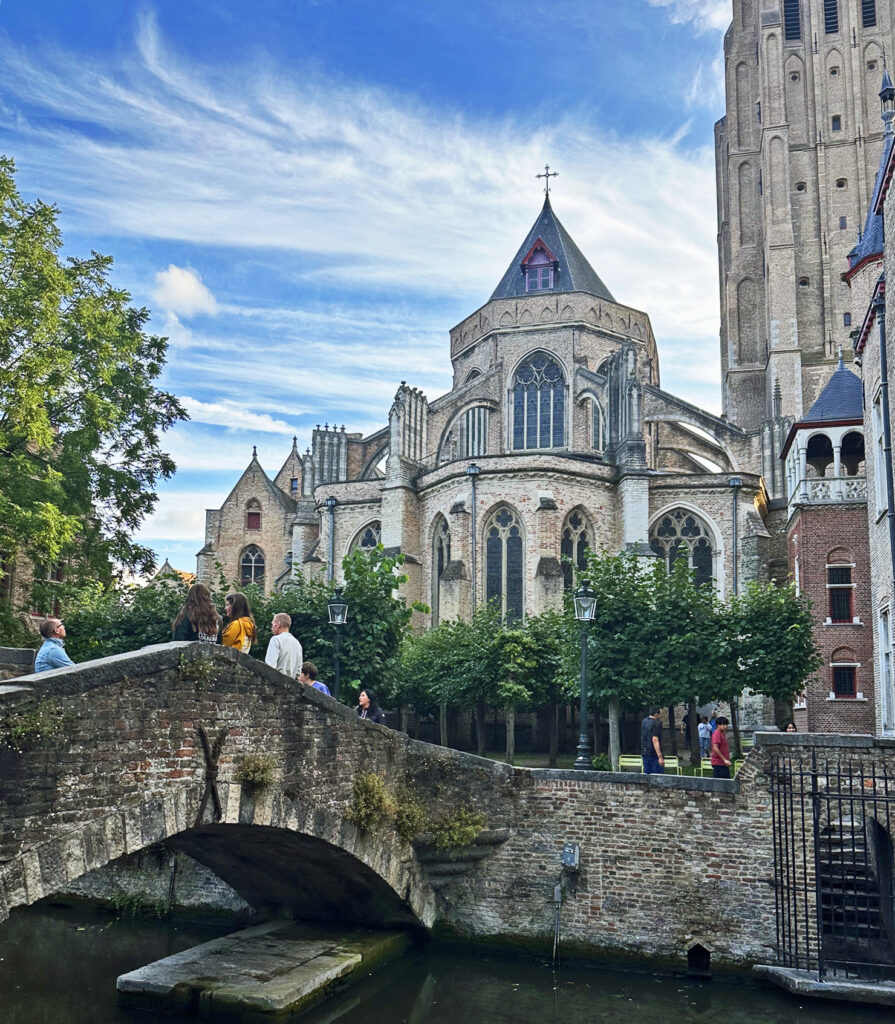
In Britain the tradition of mixing different styles of beer was, of course, in the hands of the consumer rather than the producer: mild and bitter, old and bitter, stout and mild were ordered in the pub rather than mixed and packaged in the brewery. That tradition has now died away pretty much completely. Is it time to revive it, or are the beers brewed today in Britain no longer suitable for mixing? Certainly we don’t have the huge gap between, say, an IPA and a lambic that they do in Belgium to encourage such experimentation: about the nearest example I can think of is Greene King’s Strong Suffolk, a blend of a strong aged old ale, 5X, and a lower-gravity Burton ale, BPA.
Next it’s the Biermuseum Brugge, a short distance away on Breidelstraat, also known as the Bruges Beer Experience. This will cost you €12 without beer at the end in the museum bar, which looks out over the Market Square, where you can imagine Ralph Fiennes shooting a dwarf, or €15 with three tastings of 15cl each. It has plenty of interesting interactive displays – a line-up of ten grades of malt, for example, from pale pilsner up to dark roast, which you can sample and chew, with, above each malt container, examples of the sorts of beer made with each type. Visitors are each given an iPad Mini, which will tell you about any exhibit it is pointed at. There are hundreds of pictures on the wall connected with beer, brewing, breweries and bars– mostly unexplained and uncaptioned which is rather unsatisfying, though I recognised large numbers of them – and a fair amount of breweriana and old bottles and cans. In all, it’s probably worth your money. (Praising with faint damns, I know …)
For me, however, the Halve Maan in Het Walplein is the top beer museum in Bruges, a working brewery with up-to-date equipment that has kept what looks like almost all its old brewing equipment in situ, including some of the tiniest fermentation vessels you will ever see in a professional set-up, and a magnificent copper coolship right at the top, which is certainly worth the climb up steep and narrow wooden stairs – so steep and narrow that your guide will advise you to come down backwards. The charge here is €16, and you get a glass of Straffe Hendrik in the brewery bar at the end.
The brewery’s footprint is small, and the bottling plant is away over on the other side of the city, with the beer reaching it via a three-kilometre (two-mile) pipeline under the streets of Bruges, opened in 2016, which was partly paid for by a crowd-funding venture among fans of the Halve Maan. This isn’t, incidentally, as is frequently claimed, the first beer pipeline in the world: Whitbread had between 2½ and three miles of beer mains connecting its five acres of cellars north and south of Chiswell Street in London back in the 19th century, and another lengthy pipeline was built at Bass’s then-new (and now closed) Runcorn brewery in Lancashire in 1974 to convey beer from the brewing side to the bottling and canning plant. That was a technological disaster, with huge losses of beer every time the pipeline was shut down for maintenance and cleaning. I’d love to know more about the technical details of the Halve Maan pipeline, and how they solved the problems that Bass had.
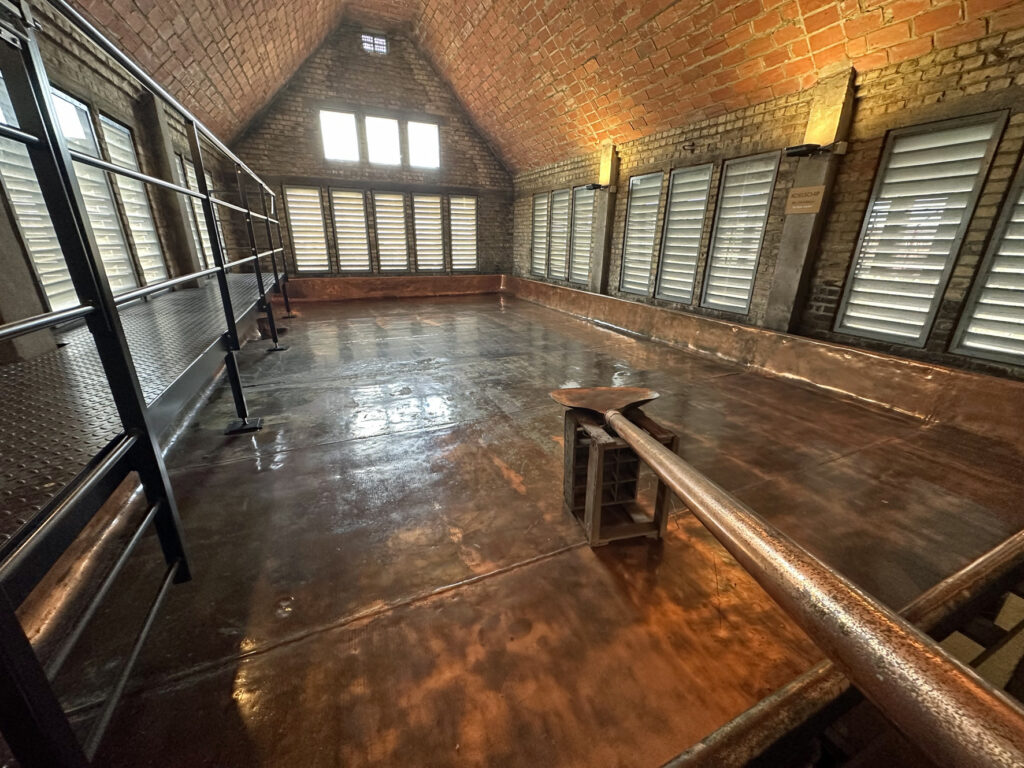
I checked out a couple more Bruges bars, including the Poatersgat, a hard-to-find underground cellar bar on Vlamingstraat – hard to find because the entrance is only about five feet high, and if people are standing in front of it smoking, as they were, you can’t see it. But I knew exactly where I wanted to end up: the Brugse Beertje in Kemelstraat. As I told the barman when I was being served, I first went into the “little Bruges bear” in 1985, to which he replied, as I knew he would: “That was before I was born.” OK, guy … but I loved it then, and though it is under new ownership, and grown over the past 40 years from one room to three, along with its hugely deserved popularity, I love it now: it has to be one of the five best bars on the planet, for its snug, warm, welcoming ambience, for its clear dedication to giving its customers a great time, for its tremendous beer list, for the terrific collection of old beeriana on the walls, for making me feel like a local even though I get in there far, far too rarely. Bruges is worth visiting for the Brugse Beertje alone.
This was the bar where, in 1988, a delegation from the newly formed British Guild of Beer Writers was given a Belgian beer and cheese tasting by the Brugse Beertje’s co-founder, the late Jan De Bruyne, that inspired Tim Webb to write the first of his guides to Belgian beer. There ought to be a plaque. There IS a memorial to Michael Jackson on one of the walls: he joined us at that tasting, having flown in from judging at a beer festival in Finland. I wonder how many drinkers in the Little Bear today, 15 years after Michael’s death, know who he is, and how he was once the most famous beer writer on the planet …
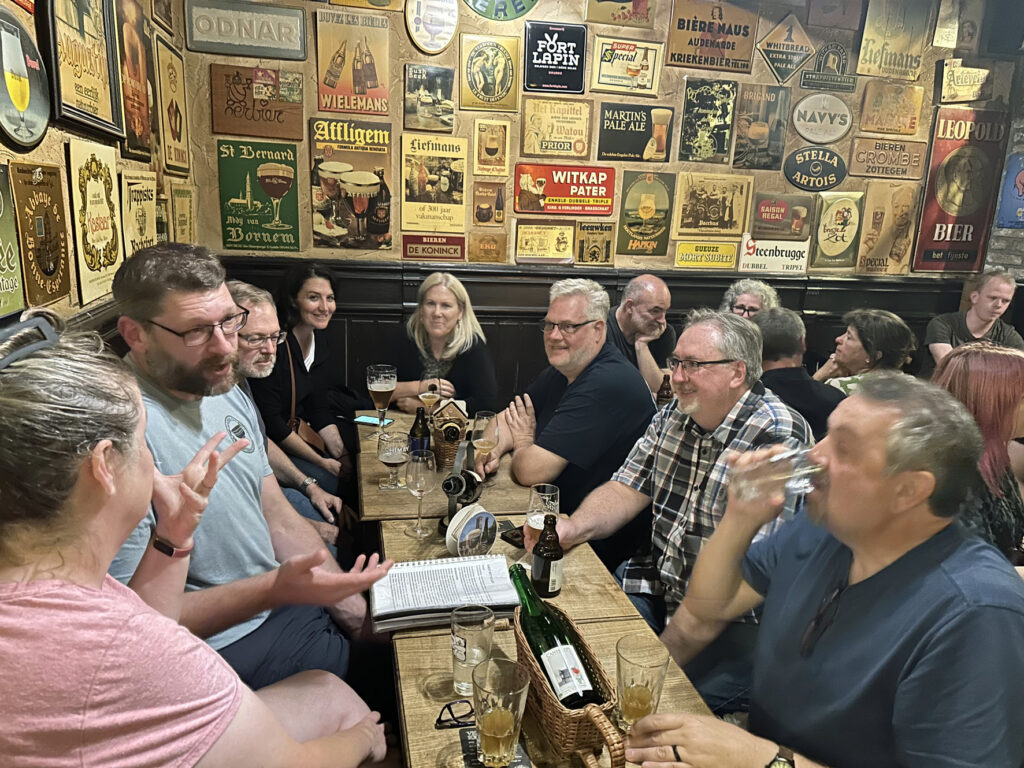
It was no surprise to find almost all my fellow travellers already in the Beertje when I arrived, and I was happy to squeeze in round their table. I thought it was fitting to finish the evening with something thumping: Black Albert, a 13 per cent abv imperial stout from the De Struise brewery in Oostvleteren (a small village the other side of Vleteren to Westvleteren, you’ll be astonished to be told). I’m rude about people who rate imperial stouts above all other beers, but actually I love a good impie. It’s a cliched descriptor, I know but Black Albert really was liquid Black Forest gateau, with burnt chocolate flavours balancing the sweetness and 72 IBU giving a hint of dry sharpness in the aftertaste: a deeply dangerous beer, since it drank nowhere near its strength, but a terrific nightcap.

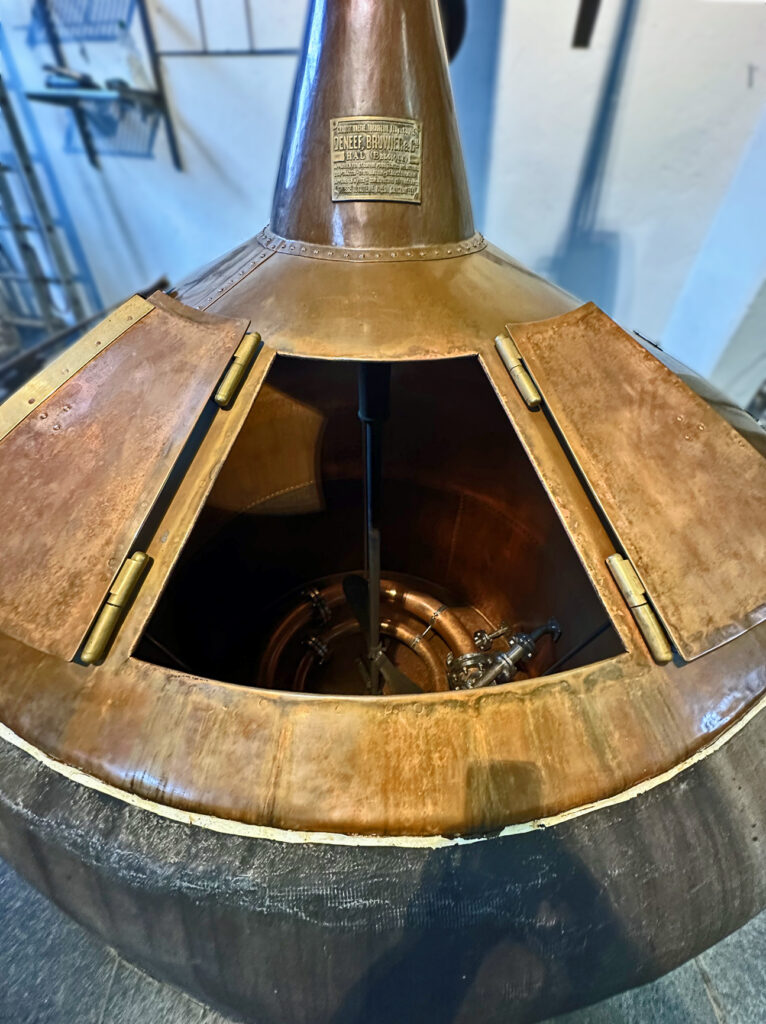
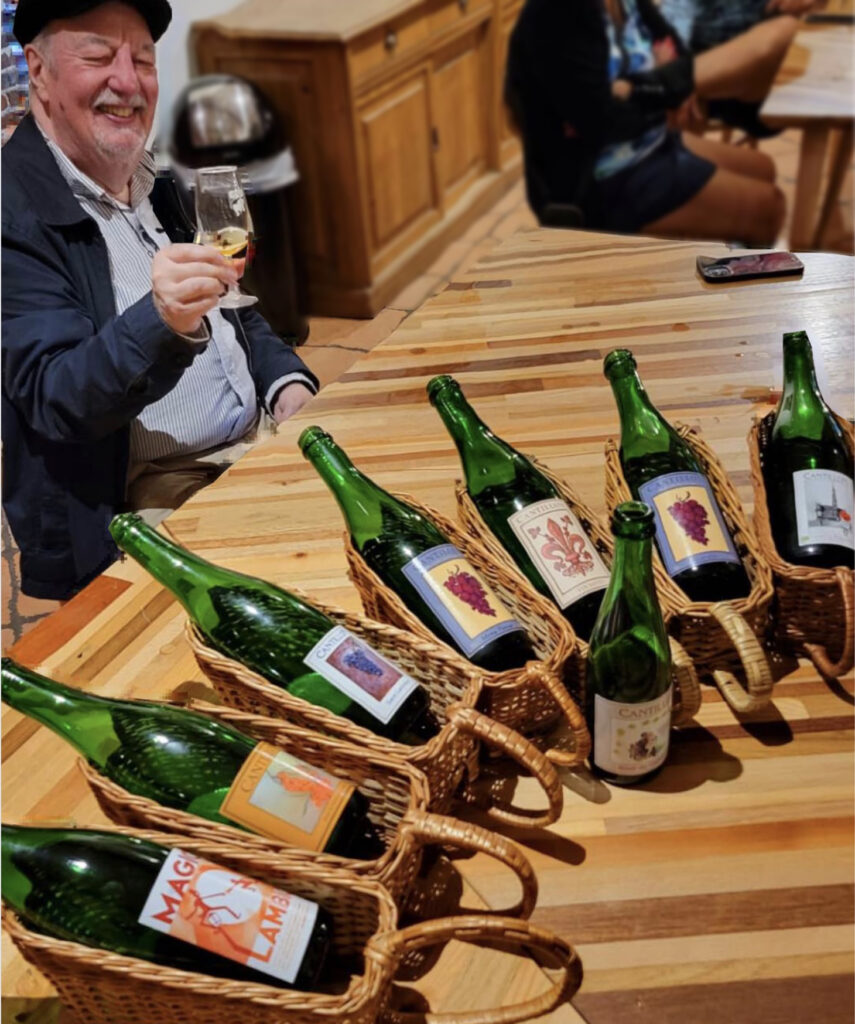
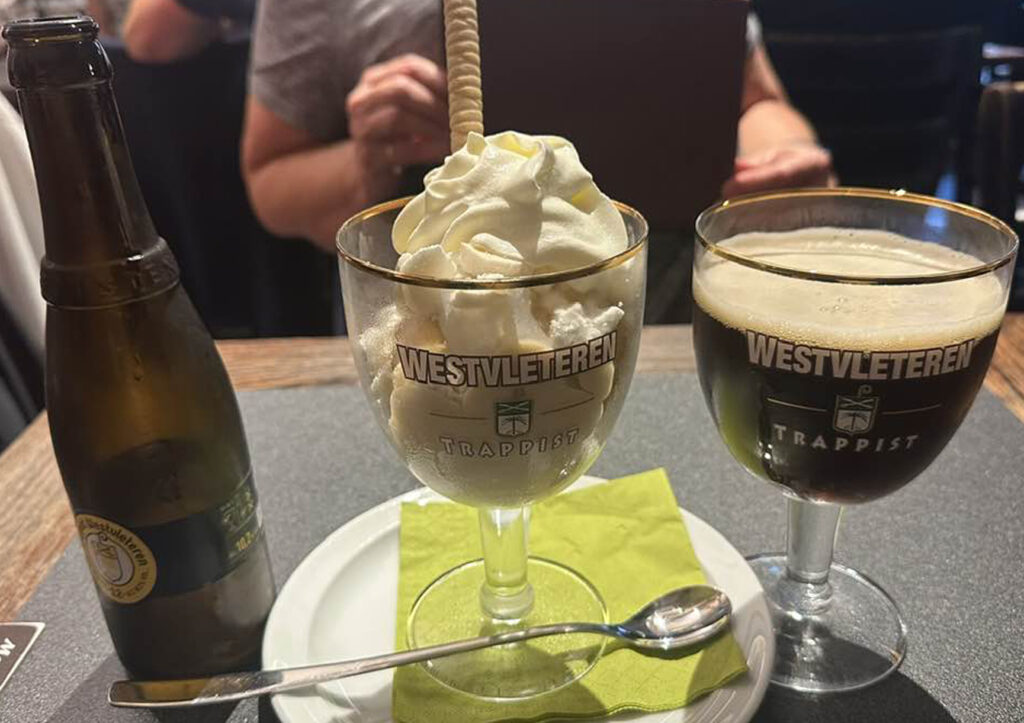
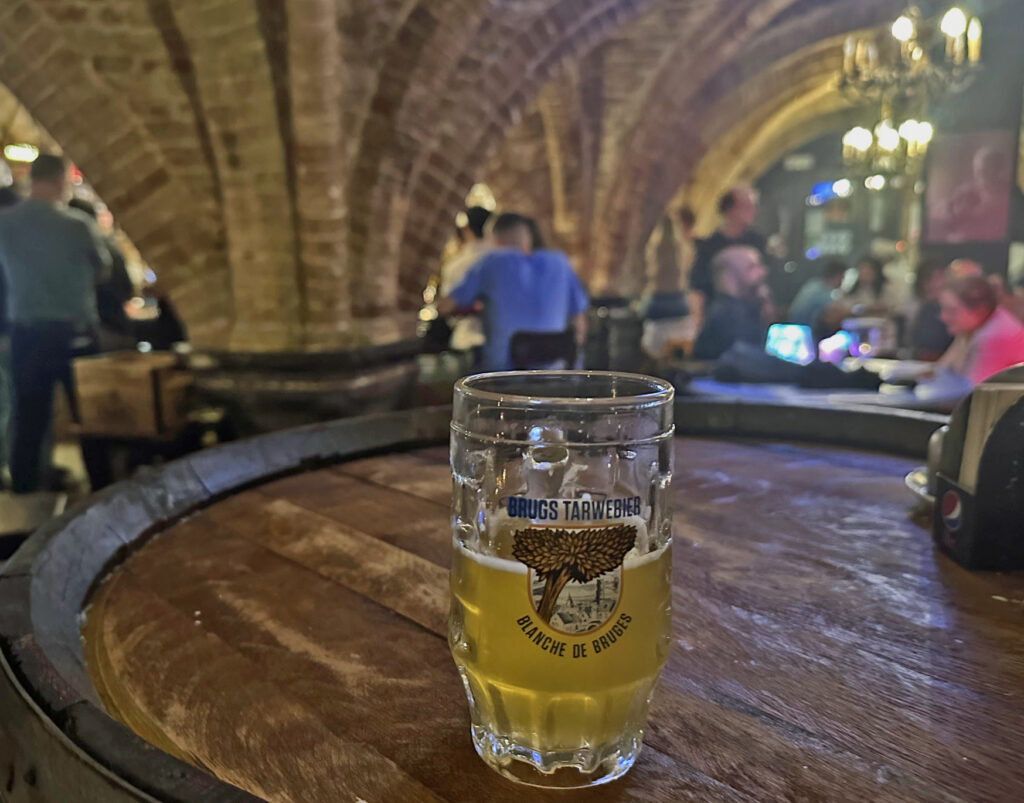
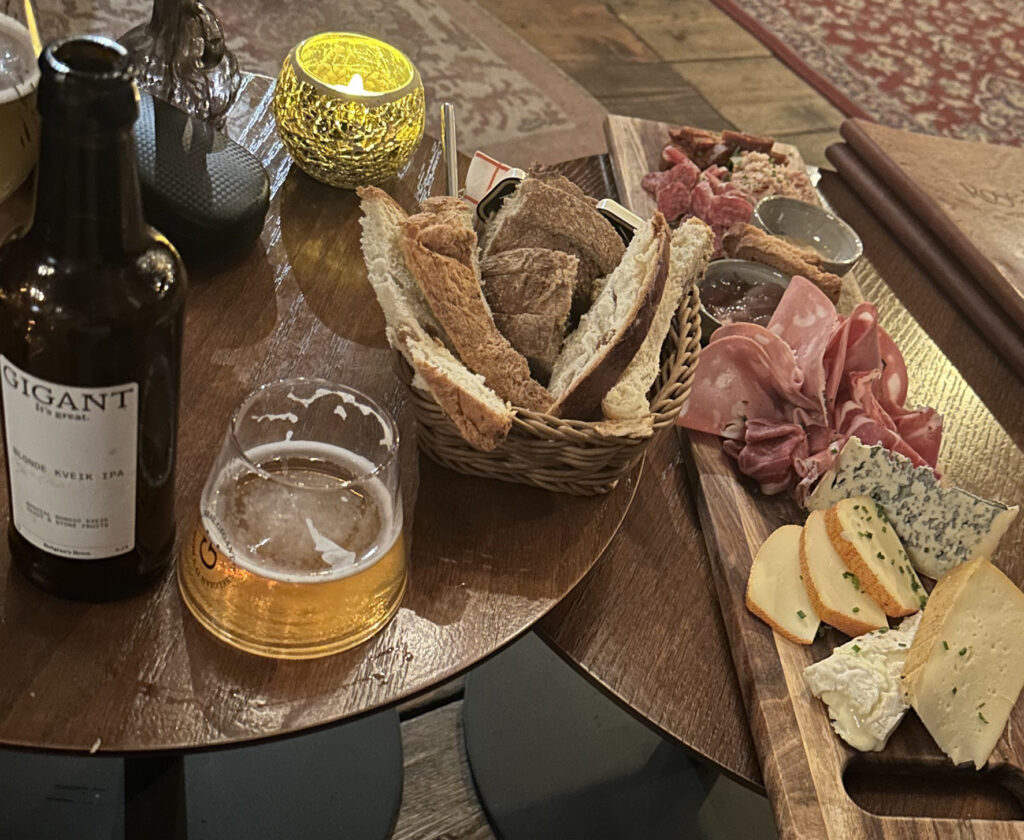
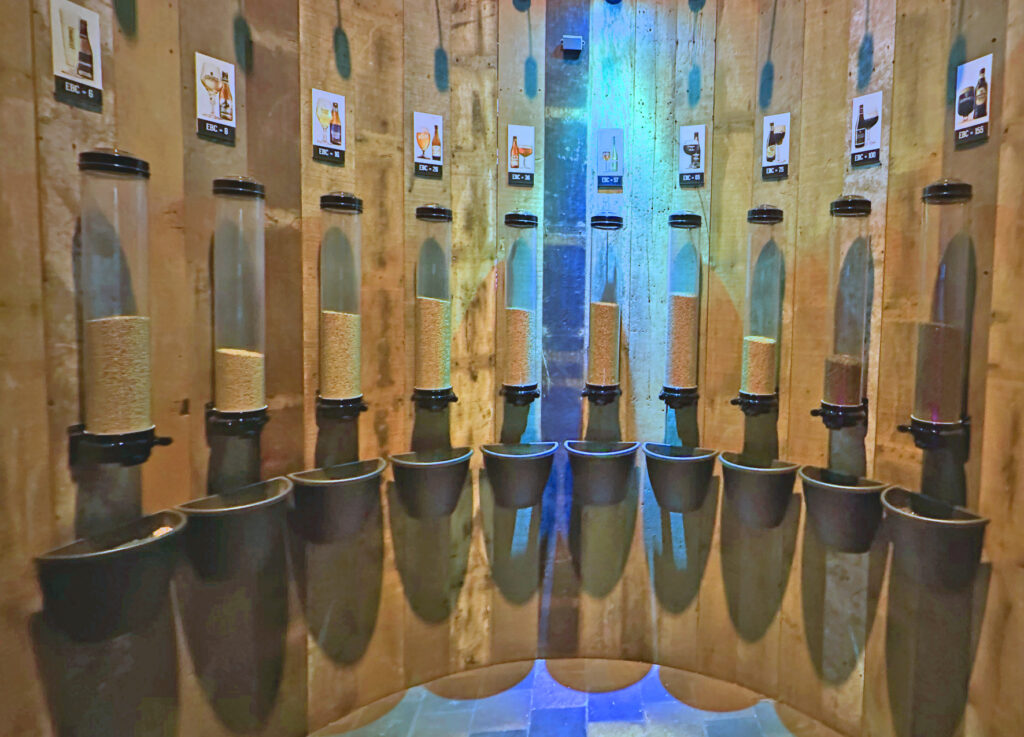
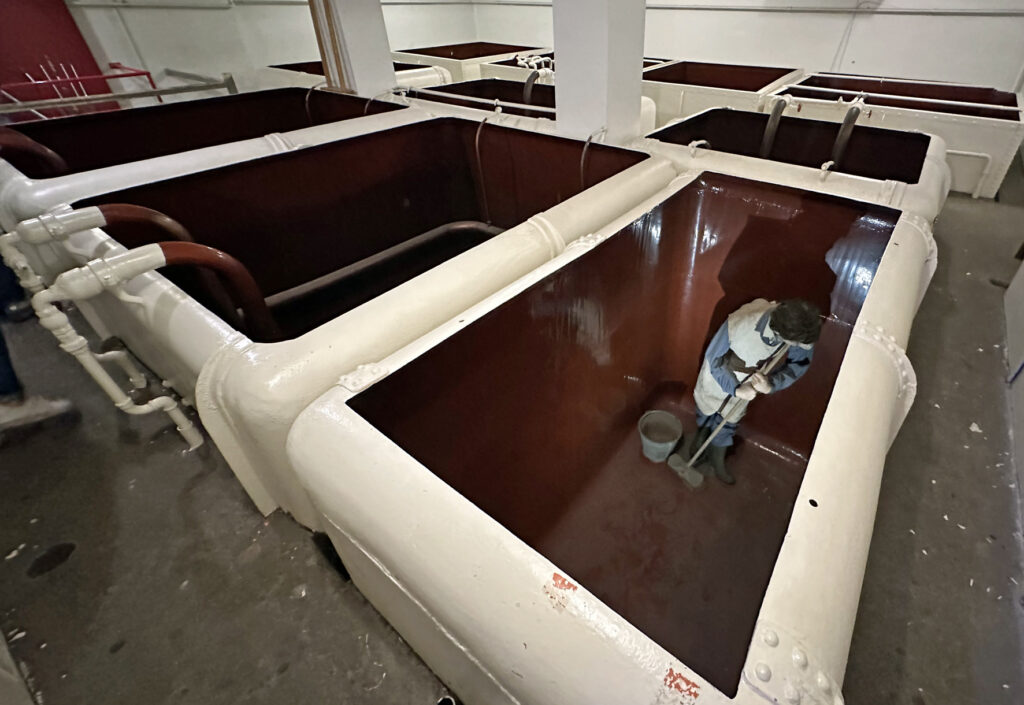

[…] To be continued […]
An example of another working beer pipeline, which takes wort from the coppers to fermenting tanks if I remember rightly, is at Alpirsbach Klosterbrau brewery in the Black Forest in Germany. I visited last year and it’s at least 1km, joining the old brewery with a newer plant the other side of town. It was quite confusing when trying to find the brewery.
Sea buckthorn is very popular in Northern Germany as a flavouring for all sorts of things – in German it’s “Sanddorn”. I’m pretty sure I’ve see it in beers!
Wonderful reading as always Martyn, really cheered my morning up.
Just as aside, GK Strong Suffolk seems to have vanished, I can no longer find it anywhere on the website.
Sad that the last interesting beer they bottled might well now be unavailable 🙁
Thank you, glad you liked it. You have to dig a bit, but Strong Suffolk gets an exrensive write-up on the GK website here https://www.greeneking.co.uk/our-beers/the-craft-of-brewing which certainly implies they are still making it …
How rickety was Gales in the 1990’s?